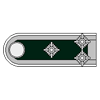I am getting frustrated trying to get small resin parts from the the pieces they are attached to when I take them out of the box especially helmets why do they put the sprue piece directly on top of the helmet in the middle ? makes it hard to get the shape right afterwards. Life was much easier with plastic; sprue cutters, hobby knife, sand paper done.
what is the best way to work with these small resin pieces without breaking them or watching them fly across the room, never to be seen again.
thanks
Hosted by Jim Starkweather
removing resin parts noob question
caireparavel

Member Since: August 19, 2012
entire network: 41 Posts
KitMaker Network: 11 Posts

Posted: Sunday, December 09, 2012 - 02:35 AM UTC
Posted: Sunday, December 09, 2012 - 03:51 AM UTC
For small parts like that, a good razor saw works the best. I have the one from CMK, that allows changing of the blades. It even work great with very small plastic parts, where snipping them could break them.

18Bravo

Member Since: January 20, 2005
entire network: 7,219 Posts
KitMaker Network: 981 Posts

Posted: Sunday, December 09, 2012 - 05:07 AM UTC
I use a rotary saw on my Dremel. Sometimes I use flush cut nippers if the shape of the part allows it. For really large casting blocks that are hard to get the rotary saw through I sometimes use a barrel shaped steel cutter on it. See my D9(R) articles for some photos.
Posted: Sunday, December 09, 2012 - 05:25 AM UTC
Martin make sure you wear a mask especially so if you are going to use a power tool.
Posted: Sunday, December 09, 2012 - 05:26 AM UTC
Quoted Text
Martin make sure you wear a mask especially so if you are going to use a power tool.
Especially with resin.
Posted: Monday, December 10, 2012 - 04:09 AM UTC
Quoted Text
Quoted TextMartin make sure you wear a mask especially so if you are going to use a power tool.
Especially with resin.
Cured resin dust is no more harmful than any other plastic dust ... and precautions should be taken with both, when using tools that create lots of airborne dust.
The gases from some resins is quite harmful when curing and can be carcinogenic, but when fully cured, its just inert plastic.
Some myths have caused fear when working with cured resin, but in reality this precaution should be taken when working with plastic in general. Nobody wants a lungs full of dust like this.


Emeritus

Member Since: March 30, 2004
entire network: 2,845 Posts
KitMaker Network: 424 Posts

Posted: Monday, December 10, 2012 - 08:11 AM UTC
Quoted Text
Quoted TextQuoted TextMartin make sure you wear a mask especially so if you are going to use a power tool.
Especially with resin.
Cured resin dust is no more harmful than any other plastic dust ... and precautions should be taken with both, when using tools that create lots of airborne dust.
The gases from some resins is quite harmful when curing and can be carcinogenic, but when fully cured, its just inert plastic.
Some myths have caused fear when working with cured resin, but in reality this precaution should be taken when working with plastic in general. Nobody wants a lungs full of dust like this.
From what I've understood as well, the cured material is inert. But what makes resin dust worth caring about, is the extremely small dust particles it makes when sanded, which can end up in your lungs.
Wet sanding also prevents dust from flying around. Also handy if you're working with larger pieces - makes much less mess to clean up.

18Bravo

Member Since: January 20, 2005
entire network: 7,219 Posts
KitMaker Network: 981 Posts

Posted: Monday, December 10, 2012 - 09:01 AM UTC
What Frank said is entirely true, although you can find all kinds of overreaction on the web regarding resin. When cured it is indeed inert. As for the dust, and that does manage to find it's way through the first few levels of protection into your lungs will, like any other dust, be transported out through time. It can be an irritant, but that's about it. irritants abound in the air we breathe every day. That's not to say you shouldn't be careful, but if I need to cut a part or two off of a block, I'll take the Dremel outside and cut away.
 |



















